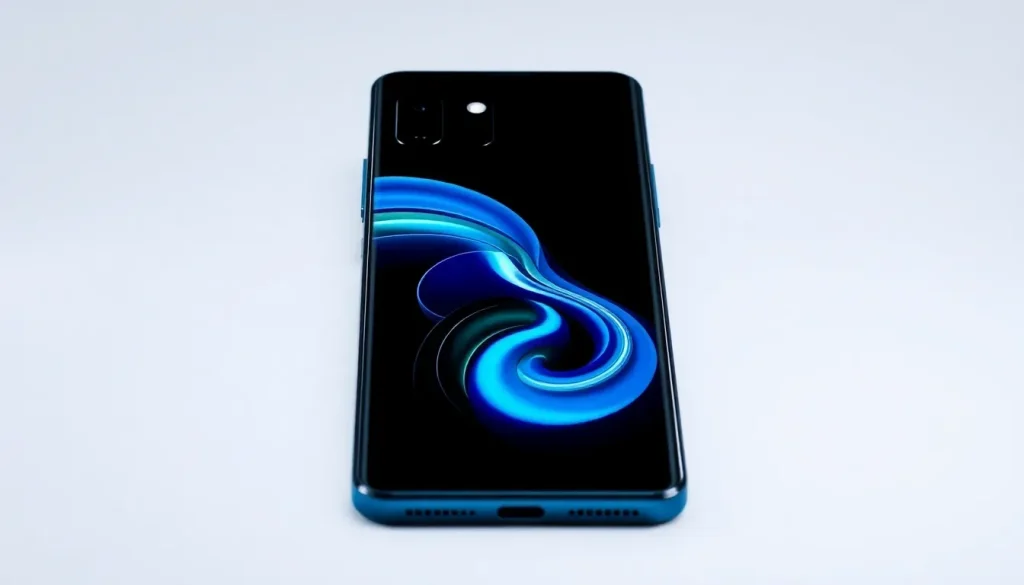Samsung Galaxy S26 to feature Snapdragon 8 Elite Gen 5 chipset

As the smartphone market continues to evolve, the competition among leading manufacturers is becoming fiercer. Samsung, a giant in the tech industry, is preparing to enhance its flagship Galaxy S26 series with cutting-edge technology. The introduction of the Snapdragon 8 Elite Gen 5 processor—potentially manufactured in-house—marks a significant step in this journey, showcasing Samsung's commitment to innovation and performance.
With the recent announcement of this high-performance chip, many tech enthusiasts are eager to learn more about what it means for the future of the Galaxy S26 models. This article delves into the implications of Samsung's strategic move, exploring not only the technical specifications but also the broader impact on the market.
- Samsung Galaxy S26 aims for an in-house Snapdragon 8 Elite Gen 5
- Benefits of in-house production of Qualcomm's SoC
- Expected release date for the Samsung S26 in Italy
- Which Samsung Galaxy A model is better? A comparative analysis
- Pricing expectations for the Samsung S26
- What to expect from the Samsung S26 Ultra
Samsung Galaxy S26 aims for an in-house Snapdragon 8 Elite Gen 5
Recent reports indicate that the upcoming Samsung Galaxy S26 will be powered by the Snapdragon 8 Elite Gen 5 for Galaxy. This development follows Samsung Foundry’s successful trial production of these chips, utilizing a cutting-edge 2 nm GAA process.
Samsung Foundry is positioning itself as a key supplier for Qualcomm, aiming to manufacture this high-end chip and compete with TSMC's 3 nm N3P production process. The primary goal is to equip the forthcoming Galaxy S26 series with these advanced SoCs, ensuring optimal performance and efficiency.
The Snapdragon 8 Elite Gen 5 for Galaxy is not merely a refined version of the existing Snapdragon 8 Elite Gen 5 available on the market; it promises to bring enhanced performance and energy efficiency. If Samsung's 2 nm process proves to be superior to TSMC's 3 nm, we could witness significant advancements in both battery life and thermal performance. This shift may also entice Qualcomm to solidify its partnership with Samsung, enabling a more reliable and streamlined supply chain.
Beyond technical advantages, the decision to manufacture its own chip has deep-rooted implications for Samsung. It represents a move towards **greater independence** in the semiconductor market, reinforcing its reputation as a leader in semiconductor manufacturing.
Benefits of in-house production of Qualcomm's SoC
Transitioning to an in-house production model for the Snapdragon 8 Elite Gen 5 brings numerous advantages for Samsung:
- Customization: Samsung can fine-tune the SoC based on the specific needs of each Galaxy S26 model, optimizing performance, efficiency, and heat management.
- Cost Efficiency: By avoiding the high costs associated with purchasing chips from TSMC, Samsung can improve its profit margins, although it may not necessarily lower retail prices.
- Prestige: Producing its own chips enhances Samsung's brand image, showcasing its technological expertise and innovation.
- Supply Chain Control: Samsung will have better control over its supply chain, reducing dependency on external suppliers during high-demand periods.
- Competitive Edge: With proprietary technology, Samsung can differentiate its products from competitors, potentially increasing market share.
In essence, a Samsung Galaxy S26 equipped with the Snapdragon 8 Elite Gen 5 for Galaxy signifies a leap forward in device performance, providing a unique selling proposition that could enhance the overall user experience.
However, this venture is not without risks. There are concerns that the new chips might underperform compared to TSMC's offerings, which could undermine the competitive advantages Samsung hopes to achieve.
Expected release date for the Samsung S26 in Italy
While Samsung has yet to confirm an official launch date for the Galaxy S26 series in Italy, industry insiders speculate that it will coincide with the global release schedule typically observed by the company. Historically, flagship models are unveiled in the early months of the year, often around February or March.
This timing aligns with Samsung's strategy to introduce new technology and innovations ahead of major industry events such as Mobile World Congress (MWC). As the launch approaches, consumers can anticipate a flurry of marketing activities and promotional campaigns aimed at generating buzz around the new devices.
Which Samsung Galaxy A model is better? A comparative analysis
In addition to the Galaxy S26 series, Samsung's Galaxy A lineup has gained popularity for offering solid performance at more accessible price points. Understanding the distinctions between models in the Galaxy A series can help potential buyers make informed decisions. Here’s a brief comparison:
| Model | Processor | Camera | Battery | Price Range |
|---|---|---|---|---|
| Galaxy A54 | Exynos 1380 | 50 MP triple camera | 5000 mAh | €400 - €450 |
| Galaxy A34 | MediaTek Dimensity 1080 | 48 MP triple camera | 5000 mAh | €350 - €400 |
| Galaxy A24 | MediaTek Helio G99 | 50 MP dual camera | 5000 mAh | €250 - €300 |
When choosing between these models, consider factors like processing power, camera capabilities, and battery life to determine which best fits your needs.
Pricing expectations for the Samsung S26
As for the pricing of the Samsung Galaxy S26, it is anticipated that the new series will follow a similar pricing strategy to its predecessors. Given the advanced technology and features expected in the Galaxy S26, buyers can expect a starting price range of:
- Galaxy S26: Approximately €999
- Galaxy S26 Plus: Approximately €1,099
- Galaxy S26 Ultra: Approximately €1,299
These prices are competitive within the flagship smartphone market, especially considering the potential features and performance enhancements that the new Snapdragon SoC could provide.
What to expect from the Samsung S26 Ultra
The Galaxy S26 Ultra is expected to be the crown jewel of the series, boasting premium features designed for high-end users. Early leaks suggest the following specifications:
- Display: 6.8-inch QHD+ AMOLED with a 120Hz refresh rate
- Camera: A quad-camera setup with a primary 200 MP sensor
- Battery: 5000 mAh with fast charging capabilities
- Storage Options: Up to 1TB with expandable storage
Such specifications would position the Galaxy S26 Ultra at the forefront of smartphone technology, appealing to photographers, gamers, and power users alike.
For those interested in visual insights about the Galaxy S26 Ultra and its potential, check out this informative video:




Leave a Reply